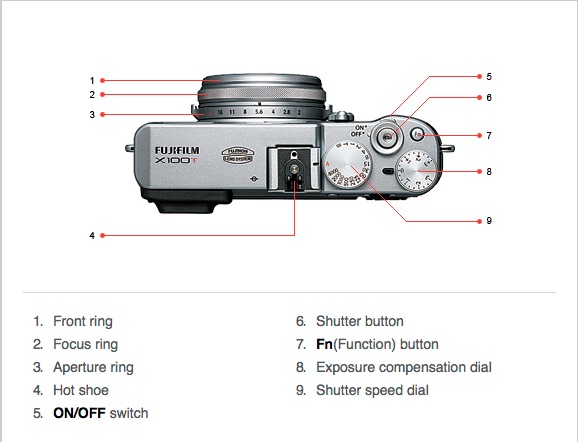REVIEW : Fujifilm X100T
/I am extending thanks to Chris Atkinson of Henry's Newmarket for access to the Fujifilm X100T. I've been thinking about a carry everywhere all the time rangefinder style camera and had read a number of glowing, positive, over flowingly superlative reviews of the latest Fuji so I wanted to test it out.The camera sells for $1399 as of this writing so this is not a random investment. It's the third iteration of the X100 family, replacing the prior X100S. I was not fond of the original X100, glacial AF being a primary complaint, but everything I read said Fuji has knocked it out of the park with this release.
I have rangefinders already. But they aren't the kind of rangefinders I would take everywhere and bash around because of their cost and the reality that they become targets for thieves even when I put gaffer tape over that bright red circular logo. Moreover, when I shoot the Leicas, I do so with specific intent, and that means I am carrying extra lenses, probably an off camera flash and cable, etc etc etc. This kind of defeats the purpose of go everywhere anytime photography and while I am not in a position to be robbed of $1400, I have been robbed of gear before and better that than the $10K that go into a Leica body and single lens.
So hence the Fuji. At first pickup, it is really nice. It fits my hands well and the buttons are not so small that my clumsy fingers cannot operate them. The hybrid optical - electronic viewfinder switches easily via a lever on the front and the AF on this release is very fast. You can also turn off all the bells and whistles making it dead silent, which is precisely what I want in something like this. For the review I am using the silver version, simply because everything else I shoot is black or dark grey and frankly I am somewhat entranced by the classic look.
The lens, and there is only one, is a 23mm f:/2 which on the APSC sized, but Fuji unique, sensor looks like a 35mm prime on a full frame. This happens to be my favourite go to focal length for walking around so we are off to a good start. While the lens is not interchangeable, there are screw on adapters for wider (28mm effective focal length) and so-called tele (50mm effective focal length) but I did not test either, because they would complicate the package and defeat the desired use case.
Fuji calls this an ISO-less camera and that implies that the higher the ISO you choose you won't see more noise because their sensor design does not increase the power to the pixels as the ISO is increased. Standard sensors have their power increased as ISO goes up, and this can result in more noise. Well, ISO-less or not, and however good the Fuji sensor is, there is more noise at higher ISO. Fuji offers multiple dynamic range expansion settings, but really what they appear to do is punch the ISO up. In my own captures in RAW, I could distinguish a significant value of using the functionality. I think I would normally just shoot RAW at the lowest ISO I could get an manipulate shadows and highlights in post processing.
I think that this is where I will miss the point of the X100T. It is built primarily to shoot JPEG and to use Fujifilm's excellent film emulations. Not only have they done a great job emulating their own film stocks, the classic chrome setting really does look and feel like Kodachrome 64, my overall favourite film, and one not usually emulated all that well in my opinion. Some have said, and I would agree most of the time that the JPEGs out of camera are better than the RAWs without significant processing. Yes you still have all the losses associated with JPEGs, but let's suppose you really don't want to post process. If that's so, the Fujifilm X100T is a killer choice.
My samples included are all shot outdoors in varying light or indoors with window light. There is a built-in flash on the X100T but like any flash on any point and shoot, once you have established it's existence, there is not much more of value to be discussed. There is a hot shoe for an external Fuji flash. I did not test any of these, but it strikes me that a large external flash would defeat the simplicity of the camera and make it unbalanced.
I discovered that I really liked the viewfinder. I cannot shoot without a viewfinder, holding the camera out and staring at an LCD panel feels completely unnatural and quite unstable. This stopped me from buying the original RX100 that I otherwise thought was the best point and shoot in the marketplace. The X100T can be set to electronic or optical viewfinder, switchable via a convenient to the finger front lever and can also overlay a digital image on the optical display. Focus peaking and other digital tools are available to help with manual focus.
The lens has an actual aperture ring. Unlike the Leicas, the aperture ring is against the body and awkward to manipulate wearing gloves, but I expect one could get used to it.
The camera uses a proprietary filter and hood mount. I thought that this was customer-unfriendly with the original X100 and still think so. Customers must buy an adapter to use standard filters. The camera does not come with a lens hood. You must purchase the metal hood separately and it resembles the metal hoods found on Leitz and Zeiss M series lenses. You MUST purchase the hood, the lens flares all too readily.
 The rear LCD is quite good, although I always found it to display the captured images far too brightly, even when turned down. I was quite concerned that the camera was seriously overexposing until I downloaded the first images. They were fine. Fortunately I have not developed a serious chimping habit so this is a minor annoyance and could very well have been a missed setting on my part.
The rear LCD is quite good, although I always found it to display the captured images far too brightly, even when turned down. I was quite concerned that the camera was seriously overexposing until I downloaded the first images. They were fine. Fortunately I have not developed a serious chimping habit so this is a minor annoyance and could very well have been a missed setting on my part.
Autofocus is quick enough and I did not miss any images waiting for AF. Focus lock is easy to achieve for recomposition and I found the camera to be very natural to shoot with. The medium wide focal length offers decent depth of field and the f:/2 maximum aperture can still provide please out of focus highlights.
Where I became more frustrated was in the processing. Fuji uses a proprietary sensor and it is not my experience that the RAW converters engineered by Adobe completely leverage the power of the sensor. DXO has a RAW converter but only for the X100, no updates have arrived for the X100S or the X100T and the software does not recognize them as the same cameras. Too bad, because DXO's RAW converter is typically superb. When I brought the RAW files into Lightroom it seemed I needed to do a lot more work to them just to get to what the basic JPEGs looked like on the camera display. I don't mind work, but extra work for basic function is disappointing. Again it is perfectly conceivable that Fujifilm has not put a ton of work into making better converters available because they think that the cameras will be shot primarily in JPEG. That would be a loss for owners.
By expanding the images in the gallery, and yes they have been through the digital darkroom because in my normal use cases, I always use the digital darkroom, you can see a nice range of tones, good highlight and shadow recovery capability, excellent range of colour and good white balance fidelity.
In summary
I like the X100T. I do not like it $1400 worth. I like it $700 worth. It is too large to fit in a pocket, but boy that lens and sensor do produce some beautiful quality. I find the proprietary sensor to be really great, but the lack of a really good RAW converter to be disappointing. The camera fits my hands well and I can carry it for hours without tiring but I do wish that the aperture ring was furthest from the body like a Leica. The hybrid viewfinder is just awesome. The flash is, well it's there. If the price was aligned to my perception of value I would definitely get it in silver for the retro look, the same reason why if I bought a Nikon Df, I would buy it in silver too. There is no benefit to silver over black, I just think it fits the product placement better. So I rate this camera as The Photo Video Guy RECOMMENDED, but your accountable for knowing your own use cases.

















